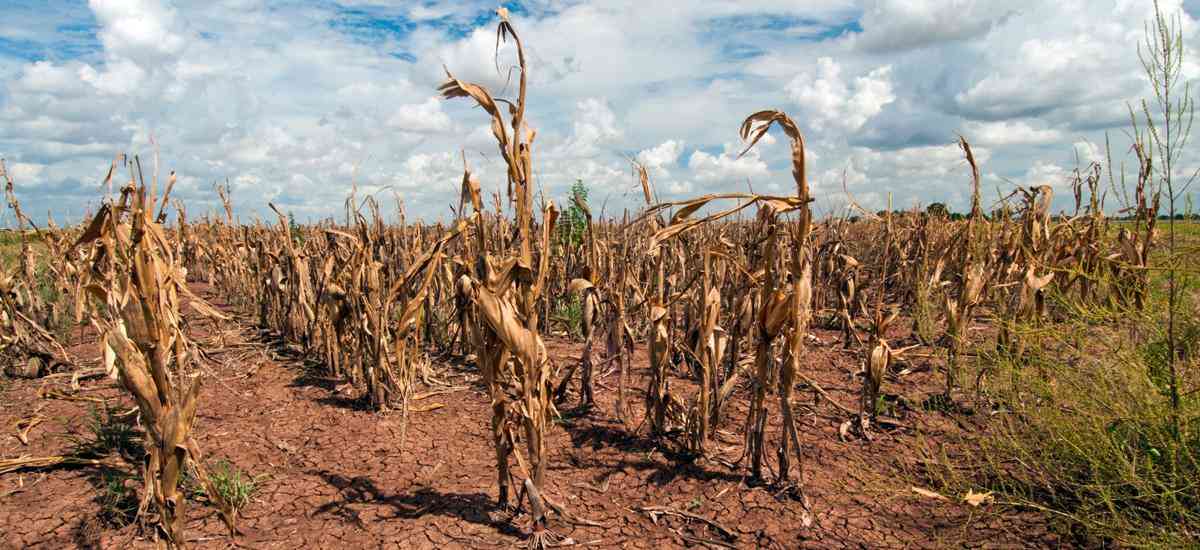
WHILE droughts are generally associated with negative aspects like sluggish economic growth, they tend to be a blessing in disguise for indigenous food and African mass markets.
The same way COVID-19 raised the profile of local indigenous food and mass markets is the same way shocks like drought see many African consumers going back to their roots in terms of consumption.
The closure of borders during COVID-19 caused many communities to rely on their local food which they had ignored in preference for imports and processed food. Likewise, the El Niño-induced drought unfolding in southern Africa is witnessing an increase in the consumption and trading of African indigenous food like small grains and tubers that have often been ignored in preference for wheat bread.
Indigenous food moving from the periphery to the mainstream
The drought-induced movement of indigenous food from the periphery to the mainstream is challenging and disrupting the long-held fantasy and perception that the only way to develop smallholder farmers is through integrating them into a few colonial value chains that are controlled by corporates.
African mass markets are grappling with increasing supply and demand of yams like taro (madhumbe) as well as indigenous fruits like nyii which apparently yield more in limited rainfall conditions. Demand for small grain foods is also on the rise including the processing and trading of cassava flour which has often been considered peripheral. The transitioning of indigenous food into urban breakfasts, lunches and dinners is a powerful trend that has been happening quietly for many years but becoming more noticeable during shocks like droughts.
Increasing opportunities for value addition
Riding on what is already happening, African policymakers can add more value to indigenous food by introducing mechanisation to indigenous food systems. For instance, the kind of mechanisation support given to the processing of maize and wheat should be provided to all indigenous small grains and tubers. So far, the value addition of indigenous food continues to be hamstrung by use of rudimentary machinery which does not produce the best quality required by most urban high-income consumers.
- Mavhunga puts DeMbare into Chibuku quarterfinals
- Bulls to charge into Zimbabwe gold stocks
- Ndiraya concerned as goals dry up
- Letters: How solar power is transforming African farms
Keep Reading
In countries where formal processing industries have been growing slowly and where some have collapsed, space has been created for SMEs to venture into value addition, but appropriate mechanisation is missing. For instance, in Zimbabwe more than 75% of value addition now happens within informal mass markets dominated by SMEs.
From production, more than 80% of the produce from A1, A2 and communal farmers moves through informal mass markets where more than 75% of the processing happens within SMEs. This has created a close relationship between SMEs and mass markets that are good at aggregating diverse commodities. Tracking value chains from production zones into big cities shows how a lot of food processing is done by SMEs.
More than a dozen entry points to value addition of indigenous food
Despite limited mechanisation, entry points to value addition of indigenous food have been increasing and include the following:
lGroundnuts shelling, roasting and salting into Mumhare as well as shelling, roasting and salting into Mutetenerwa.
lRoasting and cooking of green mealies for sale.
lBreaking bulking — This is a very common value addition process. As commodities move along value chains, bulk is broken from 90kg, 50kg, saseka, 20-litre buckets, 5l buckets, cups and single counting. Breaking bulk is a critical form of value addition.
lPackaging and re-packaging is another form of value addition.
lProcessing into semi-finished products, for instance small grains into flour (hupfu) or chimera and maize processed into manhuchu or hupfu as well as popcorn into maputi.
lCassava and sweet potato processed products like flour are often seen at food fairs but not yet fully commercialised. Mawuyu powder, garlic powder, ginger powder and chilli powder are some of the products for further processing.
lProcessing into finished products — very common is processing groundnuts into peanut butter, small grains into mahewu and staples like sadza as well as mawuyu into ice lolo. Some of the products often seen at food fairs are mawuyu drink and porridge. Also seen at food fairs are masawu jam, wine and Amarula wine as well as sweet potato confectionery like chips and drinks. From potatoes, SMEs have been able to end at fresh chips while big companies have gone into producing potato crisps.
lMixed vegetables — This comprises crops like carrots, peas, green pepper and butternut.
lVegetable and fruit drying — Fruit drying is done by a few SMEs which exhibit at food fairs but much of the drying is of vegetables including indigenous vegetables like nyevhe, mutsine and munyemba as well as leafy vegetables like cabbage, covo and rape. These forms of value addition are happening at different scales at SMEs.
Some of the emerging trends and need to protect women’s intellectual property
The integration of indigenous food systems into urban household diets and African mass markets is playing a big role in decolonising African food systems in ways that deserve recognition, support and protection from policymakers. When that happens, indigenous food and African markets will not just be associated with shocks like droughts but other critical facets like nutrition resilience. What is also clear is that women are the main innovators in value addition and processing but much of the processing happens at a very small scale mainly for household consumption in the form of mahewu, peanut butter, spices and others.
As innovators what they produce are more of prototypes using rudimentary technologies with much of the processing being very labour-intensive, for instance, roasting and pounding. When moving up the value chains, women’s innovations are taken up by big companies that have enough capital and appropriate equipment. Cases in point are peanut butter production and mahewu production which is traditionally associated with women but at commercial stage they are taken up by big corporates.
The same applies to small grains which are women’s crops at household and communal and local market level but up the value chain commercial companies not owned by women get into commercial mahewu production. This raises intellectual property issues and the need to protect women’s knowledge from being stolen and misappropriated without them benefiting.
- Charles Dhewa is a proactive knowledge broker and management specialist










